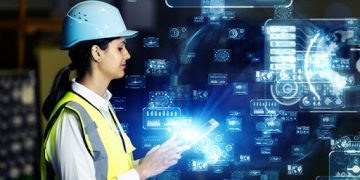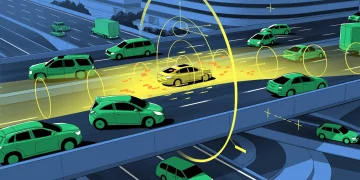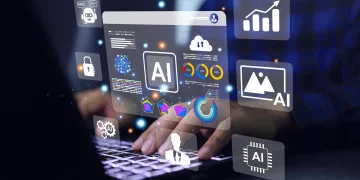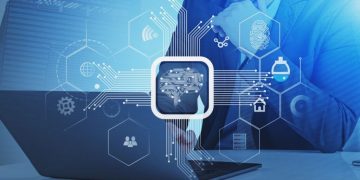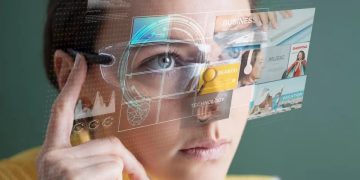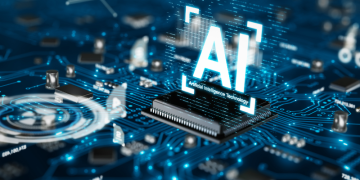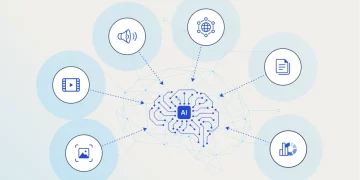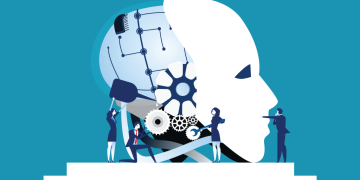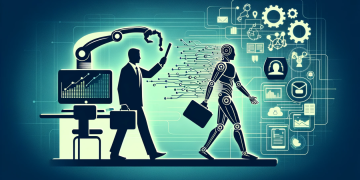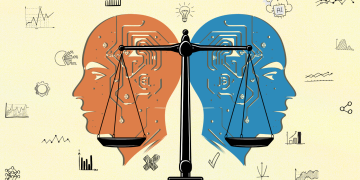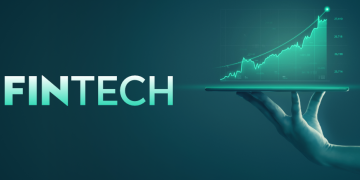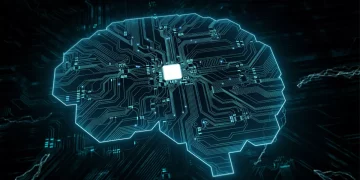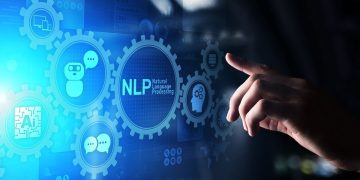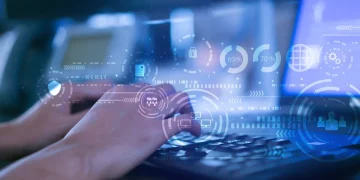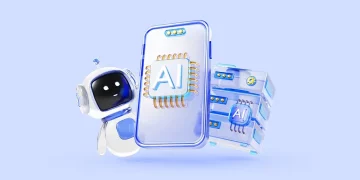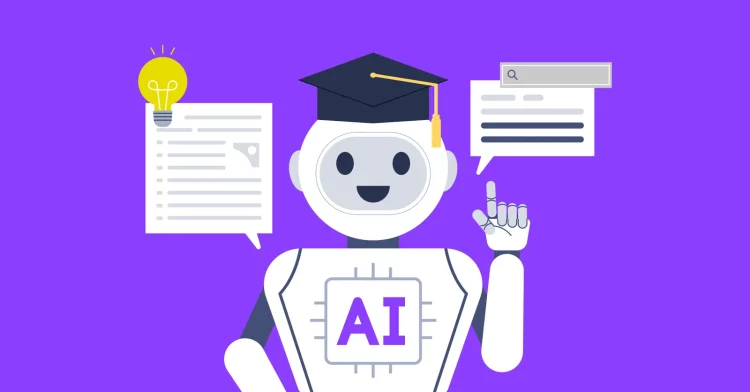Introduction:
Artificial intelligence (AI) has made significant strides in various sectors, and one of the most promising fields for its application is education. AI has the potential to revolutionize the way we learn and teach, offering personalized learning experiences, streamlining administrative tasks, and enhancing the efficiency of educational systems worldwide. However, as with any emerging technology, the integration of AI into education also comes with its share of risks and challenges.
While AI promises to bring numerous benefits, such as increased accessibility to education, better learning outcomes, and improved resource management, there are several potential risks that must be carefully considered. These risks can affect students, teachers, educational institutions, and society at large. From concerns about data privacy and algorithmic bias to the potential for deepening inequalities, it’s crucial to understand the potential downsides of AI in education.
This article will explore the key risks associated with the use of artificial intelligence in the educational sector, shedding light on how these challenges might impact the future of learning and teaching.
1. Data Privacy and Security Concerns
One of the most significant risks of AI in education is the potential for breaches in data privacy and security. AI systems often rely on vast amounts of student data, such as learning habits, academic performance, personal information, and even behavioral patterns, to function effectively. While this data is used to create personalized learning experiences, it also raises concerns about how this sensitive information is stored, processed, and protected.
1.1. Data Collection and Surveillance
AI tools used in education can collect detailed data on students’ activities, preferences, and performance. While this can be valuable for tailoring educational content, it also risks creating a surveillance culture where students are constantly monitored. This raises questions about who owns the data, how it is used, and whether it is being exploited for commercial purposes.
Moreover, excessive data collection could lead to students feeling like they are constantly being watched, which could impact their behavior and willingness to participate freely in the learning process. Additionally, sensitive data such as medical histories or special educational needs may be at risk if not handled properly.
1.2. Data Breaches and Misuse
As educational institutions adopt AI-driven platforms, the risk of data breaches becomes a critical concern. AI systems are susceptible to cyberattacks, and if student data is compromised, it could lead to identity theft, fraud, or other forms of misuse. Educational institutions might not always have the resources or expertise to adequately protect this data, making it an attractive target for hackers.
The misuse of student data can also extend beyond breaches. If third-party companies gain access to student information, there is a risk that it could be sold to advertisers or used in ways that benefit corporations rather than the students themselves.
2. Bias and Discrimination in AI Algorithms
AI systems in education are powered by algorithms that process and analyze student data to provide personalized learning experiences. However, these algorithms are only as good as the data they are trained on. If the data contains biases—such as disparities in educational access or outcomes between different socioeconomic or demographic groups—AI systems may unintentionally perpetuate or even exacerbate those biases.
2.1. Algorithmic Bias
AI algorithms are not immune to bias, and biases in the data can lead to unfair or discriminatory outcomes. For example, if an AI system is trained primarily on data from students in affluent areas, it may not perform as well for students from disadvantaged backgrounds. This could result in AI tools being less effective for certain groups of students, reinforcing educational inequalities rather than addressing them.
Additionally, biased algorithms can affect how AI tools interact with students. For instance, a personalized learning tool that recommends content based on past performance may favor students who are already excelling, leaving behind those who need more support or guidance. This could further widen the achievement gap.
2.2. Reinforcing Stereotypes
AI systems may also unintentionally reinforce stereotypes based on gender, race, or other factors. For example, an AI tutoring system may have a gender bias in the way it interacts with students or the way it evaluates their work. If these biases are not addressed, they could affect students’ academic experiences and perceptions of their abilities, leading to long-term consequences for their education and career prospects.
Efforts to develop more equitable and inclusive AI algorithms must be prioritized to ensure that AI does not reinforce existing social biases or deepen systemic inequalities in education.
3. Loss of Human Interaction and Teacher-Student Relationships
AI tools are designed to optimize learning by providing personalized feedback, adaptive learning paths, and real-time assessments. However, over-reliance on AI in education may result in a diminished role for human educators, which could have negative consequences for the student experience.
3.1. Dehumanization of Education
One of the fundamental aspects of education is the relationship between teachers and students. Teachers provide not only academic knowledge but also emotional support, mentorship, and encouragement. AI tools, while effective in delivering content and assessing progress, lack the human touch that is critical to building trust and empathy between students and their educators.
If AI systems replace too many aspects of human teaching, students may miss out on essential emotional and social learning experiences. The absence of meaningful teacher-student interactions could lead to a more impersonal and transactional approach to education, which may not fully address students’ holistic development.
3.2. Teacher Displacement and Job Loss
As AI tools automate many aspects of teaching, there is a concern that teachers could lose their jobs or see their roles significantly diminished. While AI can assist teachers by grading assignments, providing real-time feedback, and identifying areas where students need more support, the fear of job displacement remains a pressing issue.
Teachers who have invested years in their careers may find themselves sidelined as AI technologies take over administrative and instructional tasks. This shift could cause anxiety and resistance within the teaching profession, as educators may feel that their expertise and human touch are being undervalued in favor of automated systems.

4. Exacerbation of Educational Inequality
Although AI has the potential to democratize education by providing personalized learning opportunities for all students, it also has the potential to exacerbate existing educational inequalities if not implemented equitably.
4.1. Access to AI Technology
Not all students have equal access to the technology needed to benefit from AI-driven education. While wealthier schools and institutions may have the resources to invest in advanced AI systems, students in underfunded schools or remote areas may be left behind. This digital divide could lead to a situation where only certain groups of students have access to the benefits of AI, deepening existing inequalities in educational outcomes.
Moreover, students from lower-income families may not have access to the devices or internet connectivity needed to interact with AI-powered learning platforms. This could further widen the gap between privileged and disadvantaged students, undermining the potential of AI to create equal opportunities in education.
4.2. Data-Driven Decisions and Exclusion
AI systems often rely on data-driven decision-making to assess student performance and provide personalized learning paths. However, if these systems are not designed to be inclusive, they could unintentionally exclude or disadvantage certain students. For example, AI systems may struggle to accommodate students with disabilities, non-native language speakers, or those with unique learning needs, further alienating these groups from the benefits of AI-based education.
The implementation of AI in education must be carefully managed to ensure that it serves all students equally, regardless of their background or circumstances.
5. Over-Reliance on AI and Dependency
Another potential risk of AI in education is the over-reliance on these technologies, which could lead to a dependency on automated systems and undermine critical thinking and problem-solving skills among students.
5.1. Erosion of Critical Thinking Skills
As AI systems take over more aspects of education, students may become overly reliant on technology for answers and guidance, rather than developing the independent critical thinking and problem-solving skills that are essential for success in the real world. AI can provide students with immediate feedback and solutions, but it may not encourage deeper engagement with the learning process.
The risk is that students may become passive recipients of knowledge, rather than active learners who seek to understand, question, and analyze the material they are being taught. This shift could undermine the development of essential cognitive skills, leaving students less prepared for future challenges.
5.2. Over-Automation of Education
While automation can streamline many aspects of education, too much automation could lead to a “one-size-fits-all” approach that ignores the unique needs and learning styles of individual students. AI systems are designed to follow algorithms and patterns, which can sometimes be rigid or inflexible. Education, however, requires a level of adaptability that AI may not be able to provide in every scenario.
In the long term, an over-reliance on AI could lead to a system where students are only exposed to content that fits predetermined models, stifling creativity and diversity in learning.
Conclusion:
AI has the potential to transform education by making learning more personalized, efficient, and accessible. However, as with any technology, the use of AI in education comes with a range of potential risks. From data privacy and security concerns to algorithmic bias and the erosion of human relationships, there are numerous challenges that must be carefully managed to ensure that AI serves the best interests of students, educators, and society as a whole.
To mitigate these risks, it is essential that AI in education is developed and implemented responsibly. Stakeholders, including policymakers, educators, and technologists, must work together to ensure that AI systems are ethical, inclusive, and transparent. By doing so, we can harness the power of AI to improve education while safeguarding against the potential dangers it poses.

